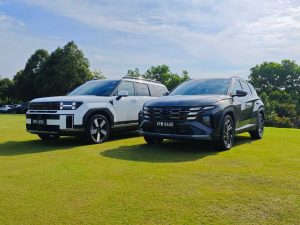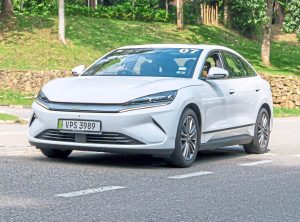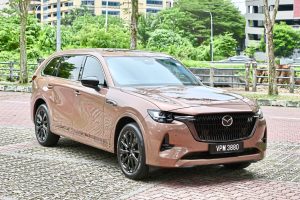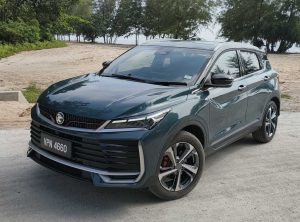SAN FRANCISCO: Everyone from Gen Z to CEOs being chauffeured now expect concert hall acoustics in the place where they listen to music the most.
The car industry is competing to optimise cabin sound, with 90% of music-streaming subscribers considering enhanced audio quality a must-have feature, and carmakers partnering with audio companies to deliver high-quality sound.
The technology is being used by top artists and is now supported by over 20 car brands, including Mercedes-Benz, Rivian, and Porsche, with the goal of creating an immersive audio experience for drivers and passengers.
It’s 8pm on a Monday, and I’m sitting with Nick Rives in a dark recording studio at Dolby Laboratories Inc here, listening to SZA’s soulful soprano float over Kendrick Lamar’s urgent lyrics as they sing All the Stars during the halftime show of Super Bowl LIX.
Rives, the Grammy-nominated director of audio engineering for Universal Music Group NV, mixed the original studio track for that song. He’s ensconced at the centre of a dozen soundboards studded with hundreds of knobs, his scruffy beard and flannel shirt belying the precision he employs to perfect the work of artists including Bob Dylan and Billie Eilish, as well as the posthumous remastering of Bob Marley’s oeuvre.

This master display isn’t showcasing the sound design for a concert or new recording, though. It’s for a car.
Electrification and autonomous driving lead the cutting edge of automobile innovation, but carmakers are also competing to optimize cabin sound by doing far more than just throwing extra speakers in the back. This is the era of the car as sound studio.
Rives is using technology that Cadillac proudly puts in its newest vehicles, among them the US$360,000 Celestiq.
He deftly adjusts the settings of Atmos, Dolby’s spatial audio system that layers sound in three dimensions, allowing tones to move as if the musicians are interacting live; now SZA’s vocals glide from the front to the back of the space as if she’s walking between us.
“The No. 1 way people experience music today is in the car,” says Tim Pryde, head of business strategy for Dolby Atmos Music.
“And that’s because of both streaming and terrestrial” (aka radio).
Vehicles are primarily where people listen to podcasts and audiobooks too, he says, and demand has never been higher for superior sound quality.
Professional musicians and recording artists, who experience Dolby sound in theaters and homes, also made their case to Pryde. “We started getting pressure from our creative community saying, ‘When are you coming to automotive?'”

Carmakers have long focused on the auditory pleasures of their vehicles, starting with the signature note of the engine.
For some people, it’s the scream of a Ferrari V-12 that gets their heart racing; for others, Corvette’s deep rumbly V-8 does the trick. (My German shepherd never fails to run to the window when she hears Porsche’s flat-six air-cooled engine.)
But they have also long endeavoured to conjure joy and even nostalgia from the din of the automotive mundane: the satisfying thunk of a Mercedes-Benz G-Wagen door; the comforting swish of a wiper blade; the cheery beep-beep of the remote lock.
Electric vehicles are in on the act too, even though they lack much in the natural sound department. In 2019, BMW AG hired composer Hans Zimmer to develop a soundtrack for its electric drivetrains; Tesla Inc. offers synthetic flatulence in the Cybertruck.
You don’t have to be a car person to understand that listening to music while you drive is one of life’s purest joys.
Maybe it’s a convertible-lover’s dream, top-down, seat back, Jimmy Buffett singing about sunshine and sand; or a sporty coupe with Chaka Khan electrifying the speakers.
Nothing cements a mood, or a memory, like driving to your favourite song. Rives puts it simply: “The relationship between cars and music is sacred.”
It’s a long-term love affair.
Motorola was making AM radios for cars in the 1930s. (It eventually took the name of one of its radios for the company itself.) In 1965, Ford Motor Co. and Motorola jointly introduced in-car eight-track players.

Mercedes-Benz started offering in-car CD players in the 1980s, though it wasn’t until the 2000s, after the invention of satellite radio, the iPod (2001) and the iPhone (2007), that listeners could access their own digital libraries in the car.
“A good stereo is something even passengers who don’t care about cars appreciate,” says Ben Wiebe, an audio obsessive in Albuquerque, New Mexico, who calls his Honda Element a concert hall on wheels. “It’s about what they don’t say: never ‘More bass,’ but just ‘Turn it up.’?”
Manufacturers have offered special sound systems since the early 2000s (think Bentley and Naim Audio; Audi and Bang & Olufsen; Mercedes-Benz and Burmester; BMW and Bowers & Wilkins) even as the continued success of aftermarket systems shows they’re often not doing enough.
A high-end speaker system from an aftermarket brand like Focal can cost several thousand dollars, plus the fees for having it installed in your car.
Car enthusiast Pavel Suslov told me his 2004 Dodge Ram 1500 was once known as the loudest truck in his hometown of St. Petersburg, Russia.
“One of the first things I did with the Ram was replace the stereo,” he says. “I hated the OEM sound system. It just didn’t sound right.”
He researched how to improve the whole setup, eventually tricking out the truck with subwoofers in the seats, custom panels with space for more speakers in the doors and high-range theater speakers throughout.

“It was a challenge to get high-quality sound in such a tight space,” Suslov says, “but the result was worth all the effort and expenses, because of the memories and emotions it brought me.”
Today, more than 90% of music-streaming subscribers say enhanced audio quality is a must-have feature in their car, according to Dolby data, and they’re willing to pay for it.
“In so many of the Gen Z studies we’ve done, they say, ‘I want to be moved by my music. Not listening to it with my laptop speakers, but in a car where I’m immersed,’?” Pryde says.
Atmos removes the left-right limitations of stereo, so that individual elements within a song can be moved with pinpoint precision on a far more expansive plane.
Each track’s metadata reflects meticulous decisions from an engineer like Rives; that DNA then tells the playback device what to do.
Sitting with Pryde in a Cadillac Optiq, I could hear Prince inhale slightly before starting the chorus to When Doves Cry — something I’d never heard before in a song I’ve listened to dozens of times.
The song engineering technology is now used by 93 of Billboard’s top 100 artists, according to Dolby, and Atmos-enabled players come standard in ultrahigh-end vehicles such as the new US$230,000 Lotus Eletre Carbon electric SUV.
Last year, the number of car brands supporting Atmos went from 10 to more than 20, including Mercedes-Benz, Rivian Automotive, Polestar and Volvo Cars. In March, Porsche AG joined the group.
“Sound technology is ever increasing with headphones and high-end systems for the home,” says Ken Kornas, the product manager who developed Cadillac’s Celestiq.
“Our customers expect it in the car, too.” — HANNAH ELLIOTT













